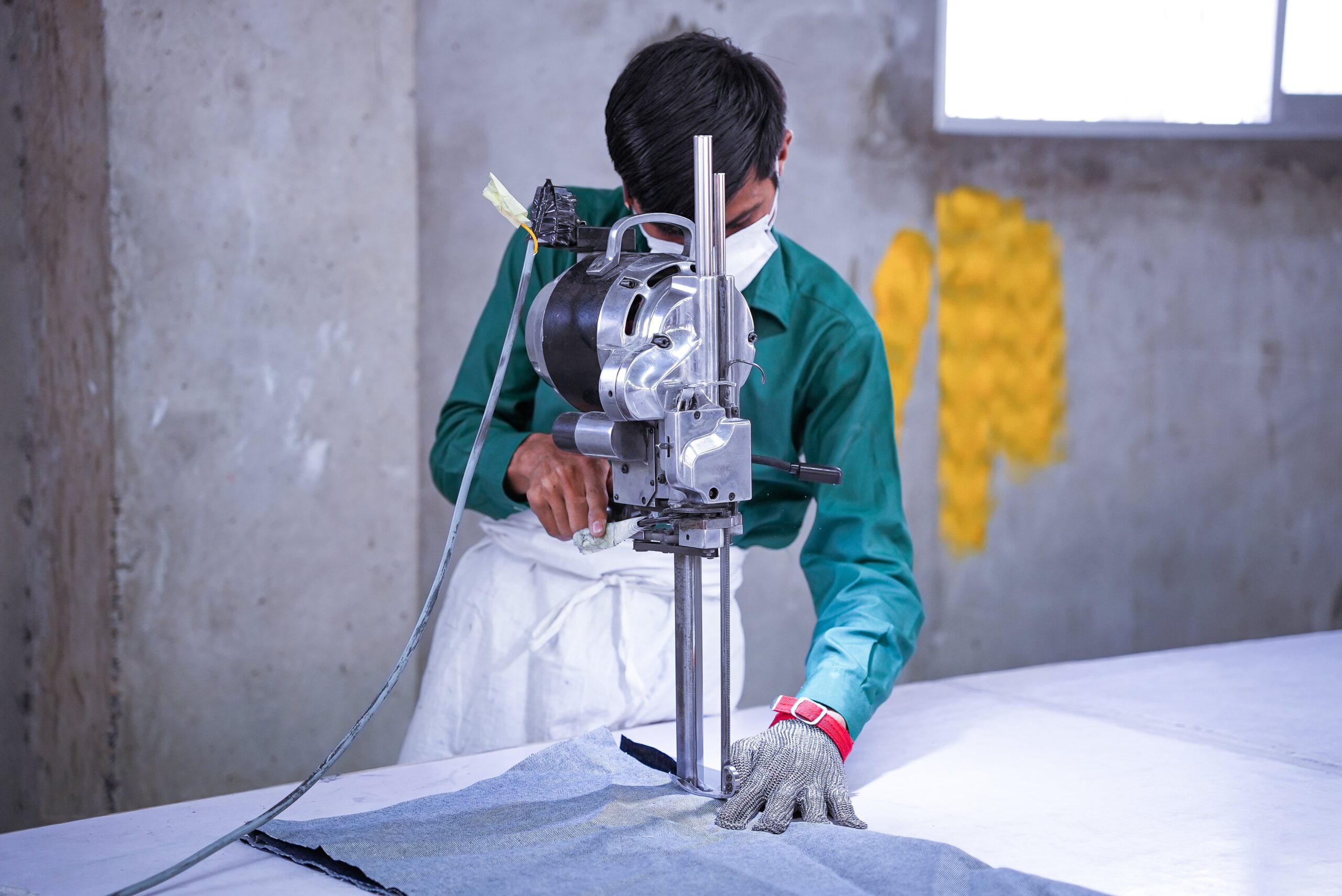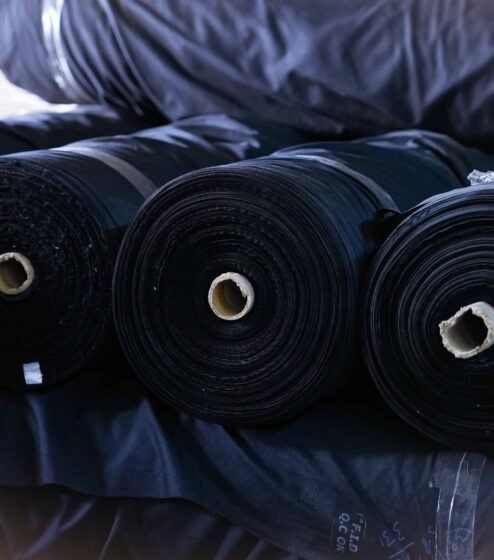
Fabric Cutting Process
The fabric cutting process is an important stage in the production of jeans since it entails cutting the fabric pieces to the proper size and shape for assembly. The fabric cutting process consists of the following general steps:
Employees are fully trained.
- Fabric Receipt: The fabric rolls arrive from the fabric supplier or textile mill. Each roll is usually tagged with vital information including the fabric type, color, width, and roll length.
- Fabric rolls are unrolled and then spread out on examination tables or machines. The fabric is typically placed in numerous layers to allow for a comprehensive inspection.
- Visual Inspection: Trained inspectors thoroughly inspect the fabric for apparent flaws such as stains, discoloration, holes, snags, yarn abnormalities, printing errors, and weaving flaws. They inspect for uniformity, color consistency, and any other flaws that could degrade the final product’s quality.


Quality is maintained every time.
- Sorting and Grading: Following inspection, the fabric is sorted according to its quality and severity of flaws. This grading method helps establish the fabric’s suitability for various applications. For example, materials with small imperfections may be appropriate for less apparent areas of jeans, whereas those with substantial flaws may be rejected or used for less critical applications.
- Documentation: Inspection results are recorded, including fabric specifics, flaws discovered, and their locations. This paperwork aids in the tracking and maintenance of quality control standards and serves as a reference for future orders or claims.
